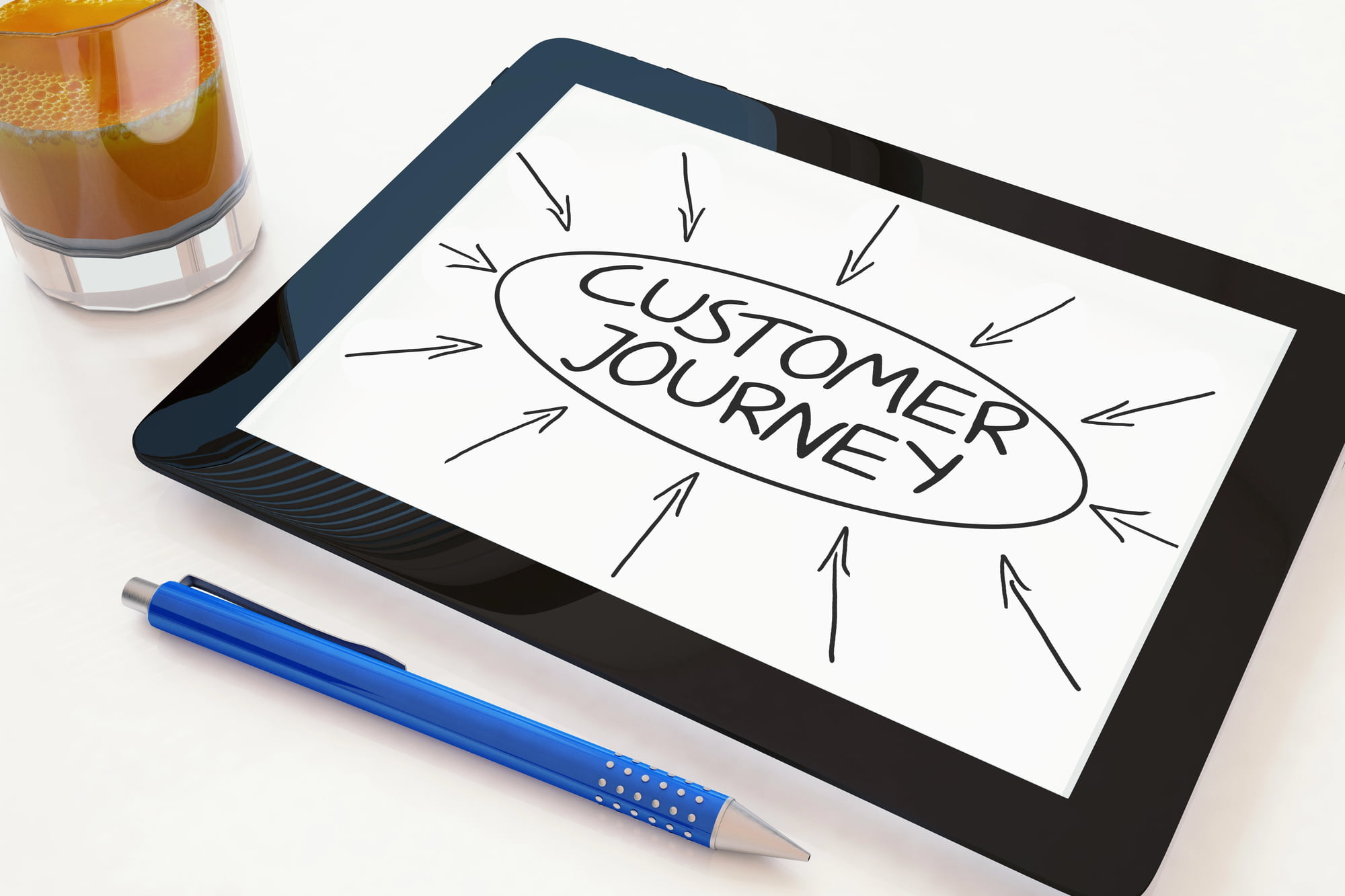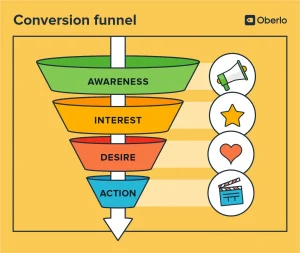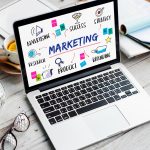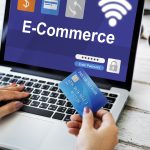
August 15,2024
The Customer Journey: Tips and best practices
Understanding the customer journey is more critical than ever for businesses aiming to enhance their marketing strategies and boost their sales. This is because the customer journey encompasses every interaction a potential customer has with your brand, from the moment they first hear about your product to their post-purchase experiences.
By dissecting this journey into distinct stages such as awareness, consideration, businesses can craft more effective and personalised strategies to engage their audience at each step of their marketing efforts, relating this to the conversion funnel, which is also closely related to the customer journey, that focuses specifically on the steps a user takes to become a paying customer.
Despite their different approaches, both the customer journey and the conversion funnel share some similar stages and are crucial to understanding and improving how customers interact with your business. This article looks in detail at both the customer journey and the conversion funnel, analysing how they function and how they work hand in hand, and takes a deeper look into the relevance of this for ecommerce businesses.
In this Article:
- A Closer look at the Journey and Funnel
- The Similarities
- How they Compliment Ecommerce
- Reviewing the customer journey: Best Practices
A Closer Look at the Journey & the Funnel
The customer journey provides a comprehensive view of all touch-points a customer has with a brand, highlighting the emotional and experience of their interactions. For example, they hear about your business, they visit your socials, then your website.
This knowledge helps businesses cater their marketing efforts, for example they might then create engaging content that resonates with customers at each stage of their journey, to foster trust and loyalty. This is what draws the customer in from their socials to their website.
On the other hand, the conversion funnel focuses on the specific steps that lead to a purchase, offering insights into where potential customers may drop off and how to improve the buying process. This is specifically important for ecommerce businesses. Understanding the customer journey and the conversion funnel is crucial for businesses because it helps them to both understand their customer and similarly to the customer journey, know how to market to them…
By combining the funnel and the journey, businesses can enhance their marketing strategies, improve customer experiences, and ultimately grow their business.
Understanding the Customer Journey
The customer journey refers to the entire process a potential customer goes through from initial awareness of a product or service to making a purchase and the steps taken after that. This journey can be broken down into several stages:
Awareness: The customer becomes aware of your brand or product through various channels like social media, search engines, or word-of-mouth.
Consideration: The customer evaluates your product against competitors, reading reviews, comparing features, and considering whether it meets their needs.
Decision: The customer decides to purchase your product, they might be influenced by things like price, convenience, and trust.
Retention: The customer evaluates their satisfaction with the product and customer service, which influences their likelihood of becoming a repeating customer.
Advocacy: A satisfied customer may become a returning customer, recommending your product or service to others, this then contributes to the awareness stage for new customers, and repeats the cycle again.
The Journey and the Funnel Similarities
The customer journey represents the entire experience a customer has with a brand, covering every touchpoint from the moment they become aware of the brand to their purchase interactions. In contrast, the conversion funnel focuses on the specific steps a potential customer takes to become a paying customer, this is typically visualised as a funnel

(source)
Despite their differences, these two models both share common stages, such as how people become aware, how they then desire and eventually take action with your product or service to drive sales and build loyalty. And, as such they work hand in hand together to effectively build customer relationships and drive sales.
How These Tools Compliment Ecommerce
Both the conversion funnel and customer journey are crucial for your business, especially for an ecommerce company. Here’s how:
Personalisation and Targeting: By understanding the customer journey, ecommerce businesses can create personalised marketing messages that resonate at each stage of the funnel.
For example, your ads can be more effectively tailored to individuals in the ‘interest’ stage of the funnel based on their behaviours and preferences identified in the customer journey. All of this will then correlate and work together to really push on the ‘desired’ aspect of both the journey and the funnel, to encourage your audience to take action.
High Competition and tailored marketing: Ecommerce customers are bombarded with options. Understanding and optimising both the journey and the funnel helps businesses stand out as you for example, may provide a more personalised shopping experience.
The more you learn about your customers journey the more you can cater your marketing efforts to them. For example, you could advertise skin care, but if their desire is more specific you might instead cater and narrow this down instead ‘skin care for sensitive skin’.
This now helps you stand out from competitors, and gets the attention of a more specific audience. Regaining their interest, and desire, This might be the do or don’t between their purchasing decision between you and your competitor..
Maximising Conversion Rates: Simply put, by refining each stage of the funnel based on insights from the customer journey, ecommerce businesses can improve their conversion rates.
For example, to engage your audience you share different articles from your website, and have discussions in groups. Based on this you have found a topic on your service that gets bought up commonly, it might be a problem or a want. But now, you can cater your marketing based around this to draw those users in and potentially increase conversions.
Building Long-Term Relationships: Generally speaking the customer journey emphasises building an emotional connection and trust, while the funnel focuses on getting the purchase. By utilising the two different methods, companies approach from two different but very relevant angles that will all impact how and with the customer journey, why someone makes their decision.
By knowing this information, ecommerce businesses can build ong term relationships with their clients, as their marketing efforts, products/or services will likely be more tailored to their audience.
Reviewing the customer journey: Best Practices
There are many things that you can do to improve your customers journey, and in turn improve your conversion rates. We put together some of the best practices:
Gather Customer Data
In order to review the data from your customers, you first have to gather the data, some ways you can do this include:
Surveys and Feedback: Use surveys, feedback forms, and reviews to collect direct feedback from customers at various stages of their journey. How did they find your business? Which product did they buy? What did they think of your product/service?
Behavioural Data: Analyse data from website analytics, and other tools to understand your customer behaviour and interactions. For example, you might look at how they interact with your website, and products. Do any pages have drop off rates? Are there any spikes in specific product conversions?
Understanding Your Touch-points
One thing you can do is to identify every touchpoint where potential customers interact with your brand. This includes things like their initial discovery, research, considerations, purchase decisions and more..
Customer Personas: One way you can do this is to develop detailed customer personas, these are detailed bios of your audience, looking at areas like demographics, in order to understand what your audience desires, their potential behaviours and more. Simply put, they help to understand the different paths your customers may take.
This helps tailor your marketing and engagement strategies to your audience.
Be Active For Each Stage of The Conversion Funnel
Awareness: In order to make people aware of your business there are different steps you have to take, a lot of this is focused around content marketing, for example you should create valuable content that addresses the pain points and interests of your target audience. Utilise blogs, videos, and social media to increase visibility.
Interest: Let’s say i’m a potential client, I am now i’m aware of your business, but what will you do to gather my interest?
Some things you might do include sharing product information, educational content, and interactive posts to keep potential customers engaged.
Desire: Once someone has interest in your product or service, the next step is to make them want it. To do this, you might:
- Use personalised Marketing: Use data to personalise offers and recommendations. Highlight unique selling propositions (USPs) and benefits.
- Customer Testimonials: Share reviews and testimonials to build trust and credibility.
Action: This refers to the specific behaviors or responses we want to elicit from our audience, such as making a purchase, signing up for a newsletter, or engaging with content. And, understanding how to prompt these actions effectively is crucial for driving success.
To encourage such responses, businesses often implement various strategies designed to create motivation and urgency. One common approach is the use of incentives, such as offering discounts, free shipping, or limited-time offers.
Identify Pain Points Through Feedback
Customer feedback is a rich source of insights into the customer experience. By paying close attention to ongoing or common issues mentioned in feedback, businesses can identify common pain points and areas needing improvement.
Collecting Feedback: Feedback can be gathered through various channels such as surveys, online reviews, social media, customer service interactions, and direct feedback forms on your website.
Categorise Feedback: Once feedback is collected, businesses can categorise it to identify common themes. This can be done manually or using text analysis tools that can group similar issues together. Categories might include product quality, customer service, website usability, delivery times, and so on.
Identifying Recurring Issues: Within these categories, look for specific issues that are frequently mentioned. For example, if multiple customers report that your website is difficult to navigate, this indicates a recurring problem that needs addressing.
Review Your Competitors
Studying your competitors’ customer journeys can provide invaluable insights into your industry and can help you find opportunities you may have missed.
Start by identifying your main competitors. These could be businesses within your industry that offer similar products or services. You should then examine the customer journeys of your competitors. (This might involve visiting their websites as if you are a buying customer, you might use their services, and interact with their customer service.
Some things you want to look out for are:
- Marketing efforts
- Website design
- Checkout processes
- Customer reviews
Assess Strengths and Weaknesses: Identify the strengths and weaknesses of your competitors’ customer journeys. Strengths might include they offer a range of features, strong branding, or their user experiences are simple and easy to follow. Weaknesses might involve complicated navigation, poor customer support, or slow delivery times.
Final Thoughts
While they are very much one in the same, where one is transactional, the other is focused more on the actual realtionship with that client, but they ultimately use the same steps to get there. Mastering the many aspects of the customer journey and how that correlates with the conversion funnel is essential and super useful for any business, and for ecommerce businesses this can be the difference between getting a conversion and losing a customer.
With this in mind, by following the best practices and continuously learning about their customers businesses can create more effective, personalised marketing strategies that will help them to attract new customers and build relationships with their existing ones. Together, these two methods enable businesses to enhance the experiences of their customers in a way that will try and drive higher conversion rates.



